Robotics Playground
Diverse Robot Collection
| 1. |
Hiwonder Jet Auto Robot Car (1 unit)
The Hiwonder Jet Auto Robot Car is a versatile mobile platform that serves as an excellent testbed for AI-driven robotics research. Equipped with advanced visual recognition capabilities, this robot can navigate complex environments autonomously, avoiding obstacles in real-time. Its programmable arm adds an extra dimension of interaction, allowing researchers to explore scenarios involving object manipulation and human-robot collaboration. This robot is particularly valuable for studies in adaptive automation and human-robot teamwork in dynamic environments. |
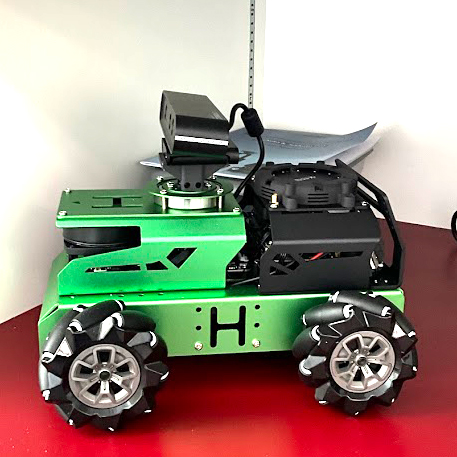 |
|
|
||
| 2. |
Hiwonder uHandPi Robotic Hand (2 units)
These Raspberry Pi-controlled robotic hands represent a leap forward in dexterous manipulation research. With five degrees of freedom, they closely mimic human hand movements, enabling intricate object handling and gesture-based communication. The uHandPi is an ideal platform for studying fine motor control in robotic systems and developing intuitive human-robot interfaces. Having both left and right versions allows for bimanual manipulation experiments, opening up possibilities for complex task execution and human-robot skill transfer studies. |
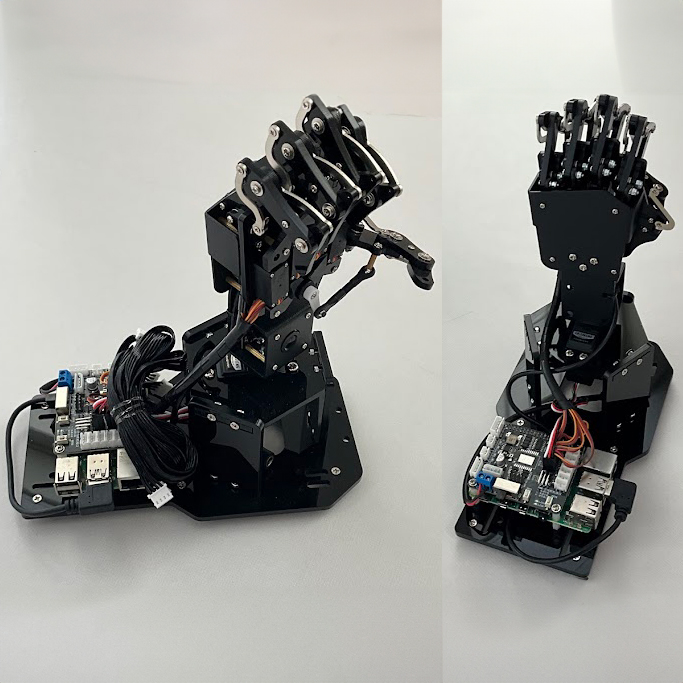 |
|
|
||
| 3. |
Soft Gripping Robot Arm (1 unit)
This innovative robot arm, constructed from flexible and compliant materials, represents the cutting edge of soft robotics. Its unique design allows for safe and adaptable interaction with delicate objects and human collaborators. The soft gripper can conform to various shapes, making it ideal for handling fragile items or operating in unpredictable environments. This arm is crucial for research into safe human-robot collaboration, especially in scenarios where traditional rigid robots might pose safety risks. |
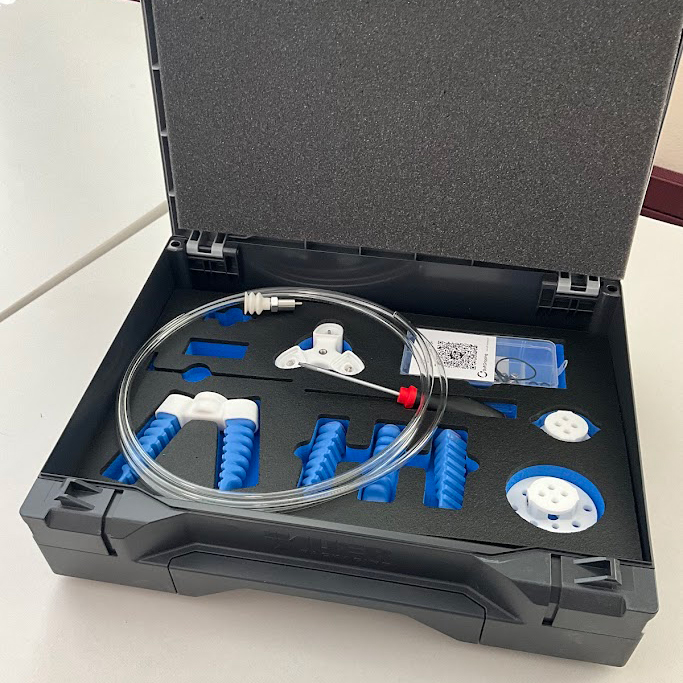 |
|
|
||
| 4. |
JetMax Vision Robot Arm (1 unit)
The JetMax Vision Robot Arm is a high-precision manipulator designed for advanced industrial and research applications. With its impressive payload capacity and sub-millimeter accuracy, it can perform intricate tasks with remarkable consistency. The integrated camera system enables visual servoing, allowing the arm to adapt its movements based on real-time visual feedback. This makes it an excellent platform for studying AI-enhanced robotic manipulation and developing sophisticated machine vision algorithms for human-robot collaboration. |
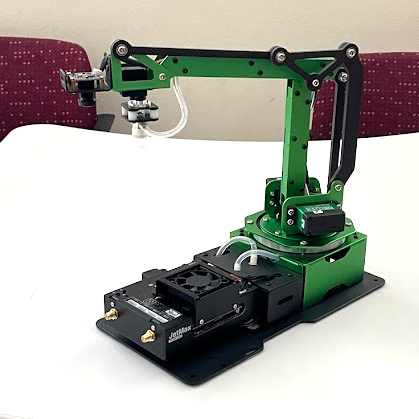 |
|
|
||
| 5. |
LKATA Mirobot (1 unit)
The LKATA Mirobot is a compact and versatile robotic arm that is an excellent educational and research tool. Despite its small size, it offers a respectable reach and payload capacity, making it suitable for various tabletop manipulation tasks. Its compact nature makes it ideal for studying human-robot interaction in confined spaces or developing and testing control algorithms before scaling up to larger systems. The Mirobot is particularly useful for prototyping pick-and-place operations and exploring collaborative workspaces. |
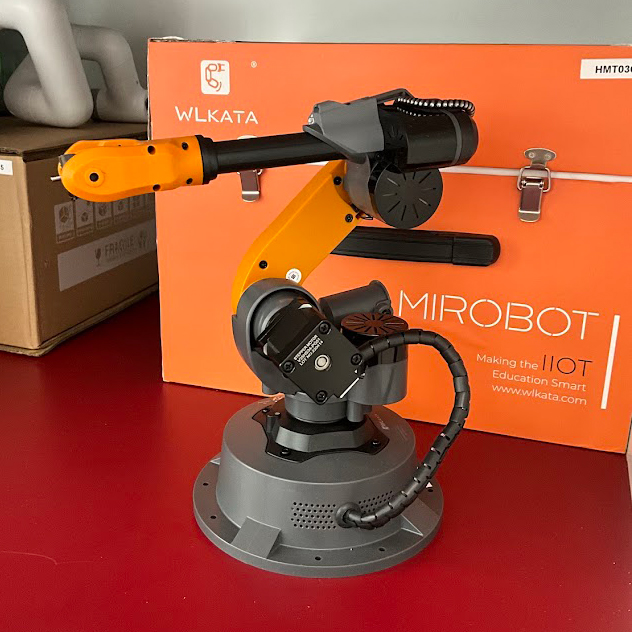 |
|
|
||
| 6. |
Hiwonder PuppyPI AIVision quadruped robot (1 unit)
This advanced quadruped robot represents the frontier of legged locomotion research. Equipped with an AI-powered vision system, IMU, and distance sensors, the PuppyPI can perceive and navigate complex 3D environments with impressive agility. Its programmable gaits allow researchers to explore various locomotion strategies, making it an excellent platform for studying adaptive movement in uneven terrains. This robot is crucial for research into bio-inspired robotics, dynamic stability control, and human-robot teaming in challenging environments like disaster response scenarios. |
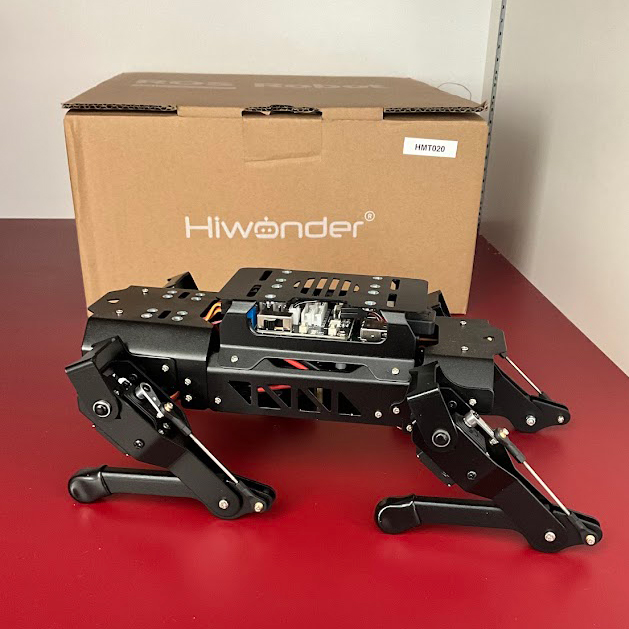 |
Custom Integration Workspace
| 1. |
Ufactory 6-axis force torque sensor for x Arm 7 (1 unit)
This high-precision force-torque sensor is a critical component for advanced robotic manipulation research. Designed specifically for the x Arm 7 robotic arm, it provides real-time force and torque measurements across all six degrees of freedom. This capability is essential for developing robots to interact safely and effectively with their environment and human collaborators. Researchers can use this sensor to implement force control strategies, enabling delicate manipulations and adaptive responses to external forces, crucial in human-robot collaboration scenarios. |
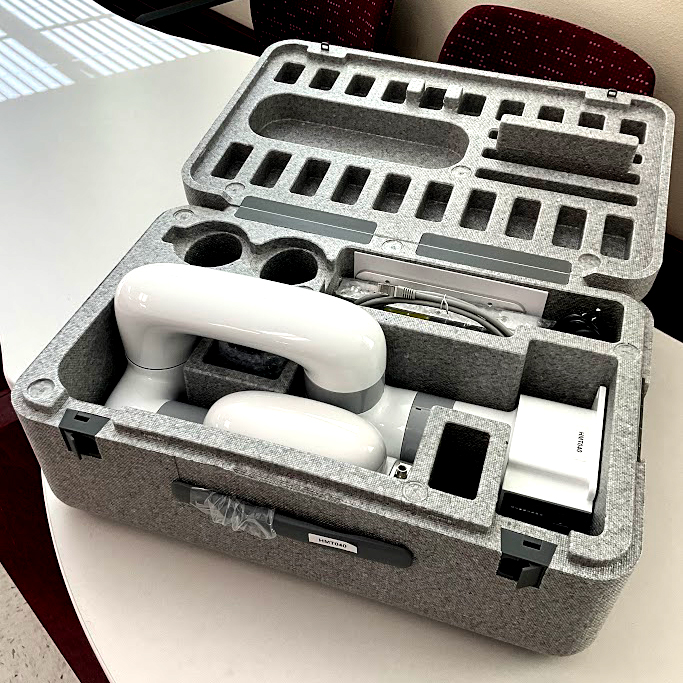 |
|
|
||
| 2. |
Eduexo Pro Robotic Exoskeleton kit (1 unit)
The Eduexo Pro Robotic Exoskeleton kit is an innovative platform for exploring human augmentation and assistive robotics. Featuring motorized joints and force sensors, this Arduino-compatible system allows researchers to develop and test wearable robotic systems. It's an invaluable tool for studying human-machine physical interaction, developing control algorithms for assistive devices, and exploring the potential of exoskeletons in various applications from rehabilitation to industrial assistance. |
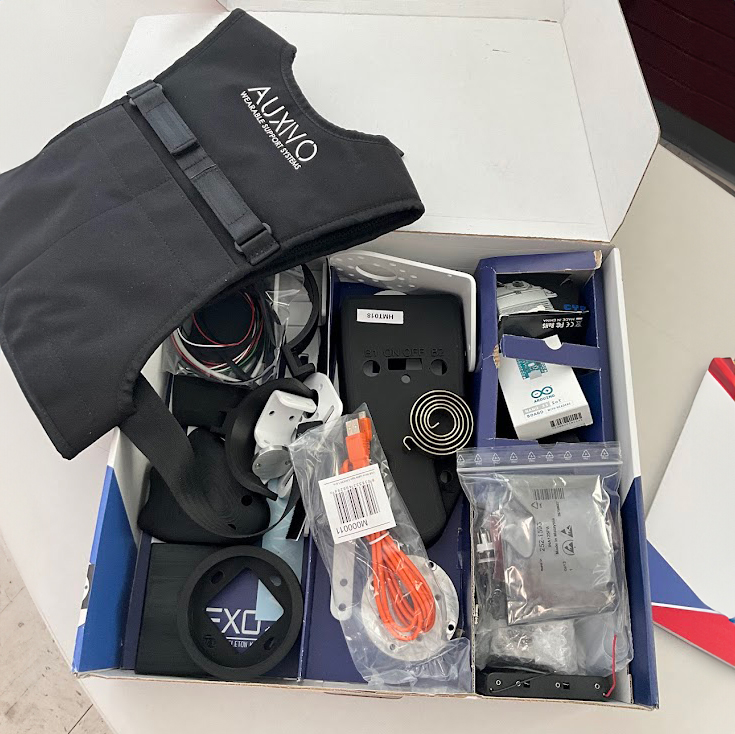 |
|
|
||
| 3. |
AI Teaching Kit (1 unit)
This comprehensive kit is a versatile AI and machine learning education and research platform. Equipped with a single-board computer, camera module, and various sensors, it provides all the necessary hardware for developing and testing AI algorithms. The pre-installed AI/ML frameworks make it easy to get started with complex projects. This kit is essential for prototyping AI-driven systems, developing computer vision applications, and exploring the integration of AI in robotic control systems. |
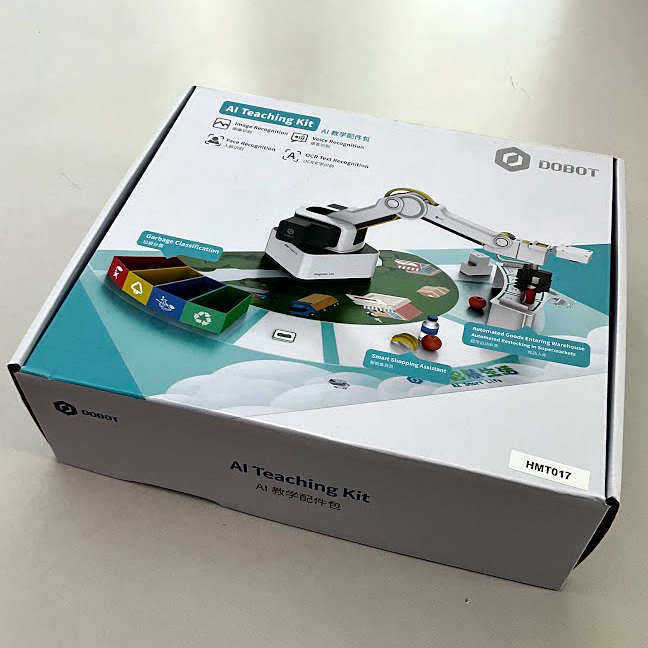 |
|
|
||
| 4. |
Lego Education Spike set (1 unit)
The Lego Education Spike set is a powerful tool for rapid prototyping and educational robotics. With its programmable hub, motors, and sensors, combined with the familiar Lego building system, it allows for quick assembly of various robotic configurations. The ability to program using both Scratch-based visual programming and Python makes it accessible to beginners while still offering depth for advanced users. This set is particularly useful for testing initial concepts in robot design, conducting educational workshops, and exploring basic principles of human-robot interaction in a highly modular and flexible format. |
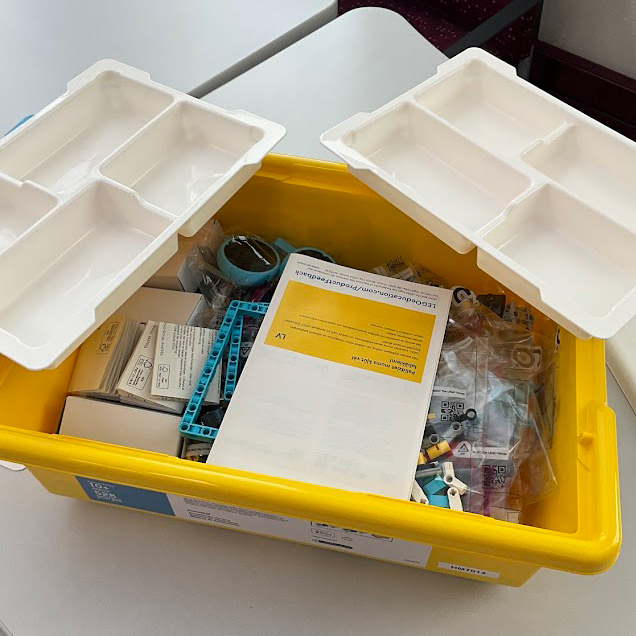 |
